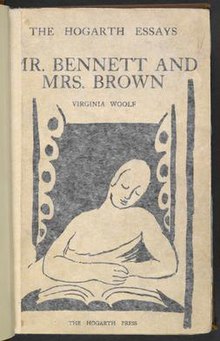
Adeline Virginia Woolf was an English writer. She is considered one of the most important modernist 20th-century authors and a pioneer in the use of stream of consciousness as a narrative device.
The Bloomsbury Group—or Bloomsbury Set—was a group of associated English writers, intellectuals, philosophers and artists in the first half of the 20th century, including Virginia Woolf, John Maynard Keynes, E. M. Forster, Vanessa Bell, and Lytton Strachey. This loose collective of friends and relatives was closely associated with the University of Cambridge for the men and King's College London for the women, and they lived, worked or studied together near Bloomsbury, London. According to Ian Ousby, "although its members denied being a group in any formal sense, they were united by an abiding belief in the importance of the arts." Their works and outlook deeply influenced literature, aesthetics, criticism, and economics as well as modern attitudes towards feminism, pacifism, and sexuality.

Mrs. Dalloway is a novel by Virginia Woolf published on 14 May 1925. It details a day in the life of Clarissa Dalloway, a fictional upper-class woman in post-First World War England. It is one of Woolf's best-known novels.
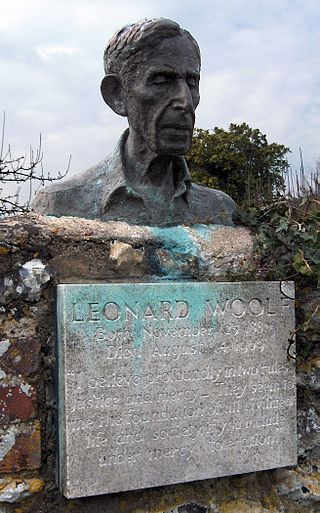
Leonard Sidney Woolf was a British political theorist, author, publisher, and civil servant. He was married to author Virginia Woolf. As a member of the Labour Party and the Fabian Society, Woolf was an avid publisher of his own work and his wife's novels. A writer himself, Woolf created nineteen individual works and wrote six autobiographies. Leonard and Virginia did not have any children.

Victoria Mary, Lady Nicolson, CH, usually known as Vita Sackville-West, was an English author and garden designer.

The Hogarth Press is a book publishing imprint of Penguin Random House that was founded as an independent company in 1917 by British authors Leonard Woolf and Virginia Woolf. It was named after their house in Richmond, in which they began hand-printing books as a hobby during the interwar period.

(Helen) Hope Mirrlees was a British poet, novelist, and translator. She is best known for the 1926 Lud-in-the-Mist, an influential fantasy novel, and for Paris: A Poem (1920), an experimental poem published by Virginia and Leonard Woolf's Hogarth Press, which critic Julia Briggs deemed "modernism's lost masterpiece, a work of extraordinary energy and intensity, scope and ambition."
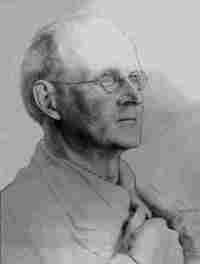
Charles Kay Ogden was an English linguist, philosopher, and writer. Described as a polymath but also an eccentric and outsider, he took part in many ventures related to literature, politics, the arts, and philosophy, having a broad effect particularly as an editor, translator, and activist on behalf of a reformed version of the English language. He is typically defined as a linguistic psychologist, and is now mostly remembered as the inventor and propagator of Basic English.

To the Lighthouse is a 1927 novel by Virginia Woolf. The novel centres on the Ramsay family and their visits to the Isle of Skye in Scotland between 1910 and 1920.

A Room of One's Own is an extended essay by Virginia Woolf, first published in September 1929. The work is based on two lectures Woolf delivered in October 1928 at Newnham College and Girton College, women's colleges at the University of Cambridge.

William Charles Franklyn Plomer was a South African and British novelist, poet and literary editor. He also wrote a series of librettos for Benjamin Britten. He wrote some of his poetry under the pseudonym Robert Pagan.

The Hours is a 1998 novel written by Michael Cunningham. It won the 1999 Pulitzer Prize for Fiction, the 1999 PEN/Faulkner Award for Fiction, and was later made into an Oscar-winning 2002 film of the same name.

Literary modernism, or modernist literature, originated in the late 19th and early 20th centuries, and is characterized by a self-conscious separation from traditional ways of writing in both poetry and prose fiction writing. Modernism experimented with literary form and expression, as exemplified by Ezra Pound's maxim to "Make it new." This literary movement was driven by a conscious desire to overturn traditional modes of representation and express the new sensibilities of the time. The immense human costs of the First World War saw the prevailing assumptions about society reassessed, and much modernist writing engages with the technological advances and societal changes of modernity moving into the 20th century. In Modernist Literature, Mary Ann Gillies notes that these literary themes share the "centrality of a conscious break with the past", one that "emerges as a complex response across continents and disciplines to a changing world".
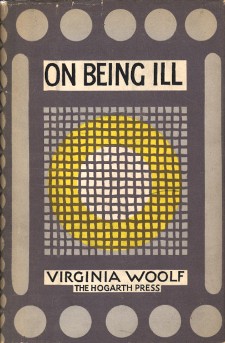
On Being Ill is an essay by Virginia Woolf, which seeks to establish illness as a serious subject of literature along the lines of love, jealousy and battle. Woolf writes about the isolation, loneliness, and vulnerability that disease may bring and how it can make even the maturest of adults feel like children again.
The Mark on the Wall is the first published story by Virginia Woolf. It was published in 1917 as part of the first collection of short stories written by Virginia Woolf and her husband, Leonard Woolf, called Two Stories. It was later published in New York in 1921 as part of another collection entitled Monday or Tuesday.
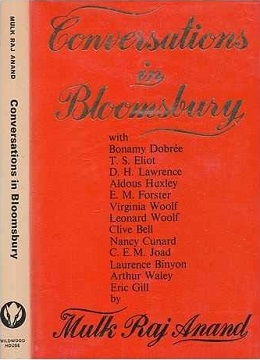
Conversations in Bloomsbury is a 1981 memoir that depicts writer Mulk Raj Anand's life in London during the heyday of the Bloomsbury Group, and his relationships with the group's members. It provides a rare insight into the intimate workings of the English modernist movement, portraying such prominent figures as Virginia Woolf, T. S. Eliot and D. H. Lawrence. Anand challenges the cultural narrative that many have received about these literary figures.

Freshwater: A comedy is a play written and produced by Virginia Woolf in 1935, and the only play she wrote. Although only performed once in her lifetime, it has been translated into many languages and produced in many countries since. Alfred Lord Tennyson appears as a character in this play.
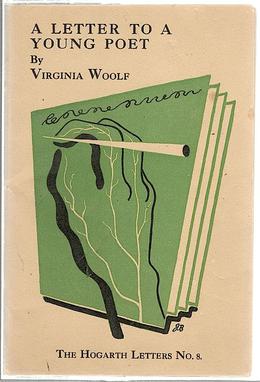
A Letter to a Young Poet was an epistolary novel by Virginia Woolf, written in 1932 to John Lehman, laying out her views on modern poetry.

Paris: A Poem is a long poem by Hope Mirrlees, described as "modernism's lost masterpiece" by critic Julia Briggs. Mirrlees wrote the six-hundred-line poem in spring 1919. Although the title page of the first edition mistakenly has the year 1919, it was first published in 1920 by Leonard and Virginia Woolf at the Hogarth Press. Only 175 copies of the first edition were distributed. In 2011, the poem was reprinted in an edition of Mirrlees's Collected Poems, edited by Sandeep Parmar, which helped create more critical interest.
